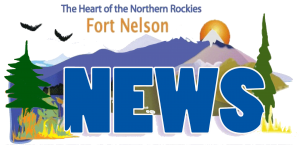New cut level set for Fort Nelson Timber Supply Area
VICTORIA – Effective July 16, 2019, the new allowable annual cut (AAC) for the Fort Nelson Timber Supply Area (TSA) is 2,582,350 cubic metres, announced Shane Berg, deputy chief forester.
The new AAC is a 59% increase from the previous allowable annual cut of 1,625,000 cubic metres set in 2006 and includes partitions to encourage an expansion of forestry opportunities in the northwest portion of the TSA and promote a return to harvesting the deciduous timber profile.
“The Fort Nelson TSA contains a vast area of mature deciduous stands,” said Berg. “I am confident that my decision will encourage forestry opportunities for First Nations and other operators, while maintaining responsible management of biodiversity objectives.”
The new cut level includes three partitions:
200,000 cubic metres to be harvested from the northwest portion of the TSA;
1,469,410 cubic metres from deciduous volume in the rest of the TSA; and
912,940 cubic metres from coniferous volume in the rest of the TSA.
The Fort Nelson TSA covers nearly 9.9 million hectares in the northeast corner of the province, with almost 631,000 hectares available for timber harvesting.
Wildlife in the TSA, including boreal caribou, northern caribou and Stone’s sheep, are protected by ungulate winter ranges and wildlife habitat areas. In addition, the western portion of the TSA overlaps with the Muskwa-Kechika Management Area, which supports a diverse range of large mammals. The Fort Nelson TSA does not include southern mountain caribou.
Fort Nelson is the major community in the TSA and there are a number of smaller settlements adjacent to the Alaska Highway, including Prophet River, Toad River, Muncho Lake, Lower Post, Coal River and Fireside.
The dominant tree species are aspen, white spruce and pine.
Nine First Nations reside in, or have traditional territory within, the Fort Nelson TSA, including Fort Nelson First Nation, Prophet River First Nation, Dene Tha’ First Nation, Halfway River First Nation, Doig River First Nation, Acho Dene Koe First Nation, Daylu Dena Council represented by Kaska-Dena Council, Liard First Nation and the Tahltan Nation.
Quick Facts:
The deputy chief forester’s allowable annual cut determination is an independent, professional judgment based on information ranging from technical forestry reports, First Nations and public input to the government’s social and economic goals.
Under the Forest Act, the chief forester must determine the allowable annual cut in each of the province’s 37 timber supply areas and 34 tree farm licences at least once every 10 years.
Contact:
Ministry of Forests, Lands, Natural Resource
Operations and Rural Development
Media Relations
250 356-7506
Connect with the Province of B.C. at: news.gov.bc.ca/connect

 Follow
Follow



Recent Comments